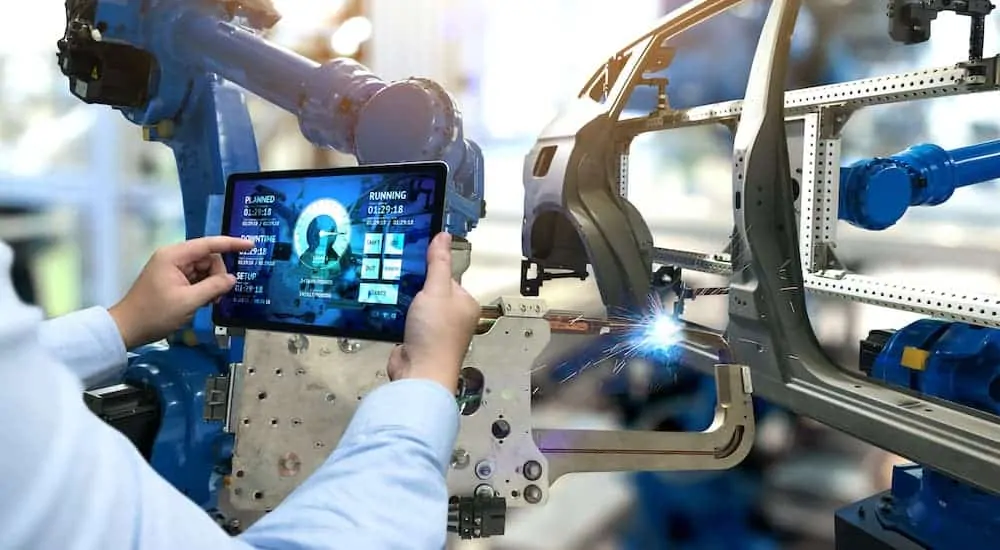Any automotive fan knows that Japanese car manufacturers are on top of their game. Japanese vehicles have a longstanding reputation for reliability, smart design, and reasonable pricing. In the pursuit of Japanese engineering, consumers will search far and wide to find a “Nissan dealer near me.” There’s just no denying that Japanese auto manufacturers are ahead of the technological curve. But, just how far ahead are they?
Shopping for a new car brings up daydreams of the open road, cruising along with your friends with music blasting from the speakers. Rarely do we think about the high-tech robots tinkering behind the scenes of automotive production. Nissan is at the forefront of automotive robotics design and usage. Needless to say, today’s technology is pretty impressive.
The History of Robot Culture
Robots are an integral part of pop culture these days. Television and movies have included robots in many roles since they first hit the big screen in 1919 with the film, The Master Mystery. Robots have served as helpers (in The Jetsons) and comic relief, such as R2D2 and C3PO in the Star Wars series. Robots have even earned leading character roles, like in the show, West World. In The Terminator and The Matrix, robots are depicted as malignant and domineering antagonists.
Since the concept of robots is so ingrained in today’s culture, we may assume that the idea of robots has always been around. However, the word, robot, originates from the Czech word: Robota. It means “forced labor” and didn’t become part of our language until the 1920s. It’s interesting to think about robots from the framework of this original word. The modern definition of a robot includes machines made to resemble living things that can move on their own and perform complex tasks. Robots were initially viewed as devices or utilities, created to perform tasks that are repetitive or monotonous for humans.

Makings of Mechanical Beings
Robots also had mythical beginnings, literally. Ancient Greek mythology speaks of the god of metalworking Hephaestus, who created mechanical helpers. Classic movie-lovers will recognize the giant metal guardian Talos, who was created by Hephaestus to protect the island of Crete.
Jewish folklore also speaks of a creature known as the Golem. The Golem was made out of the soil and brought to life through magic incantations. It served its creator, doing whatever tasks it was assigned. These ancient tales offer insight into the cultures that imagined them. Consciously or subconsciously, these concepts later inspired those responsible for making the real robots we have today.
Ancient Egyptians sought advice from statues that were then able to move their heads in reply. Later, the Greeks developed some of the first proto-robots, known as automata. Ancient Chinese civilizations also mentioned robots in their lore and developed automata in the Western Zhou dynasty in the 10th century. These early robots were essentially complex toys that could perform actions mimicking simple human behavior.
One particularly famous example was “the Writer.” This 18th-century automaton could write passages up to forty letters long. It would dip its pen in ink, follow the text with its eyes, and even shake the pen occasionally to prevent ink from spilling. While automata did not do anything other than entertain their audiences with their mechanical antics, they were an early example of programming which utilized coordinated gears to perform simple tasks.
The first “useful” robots came in 1948 when William Grey Walter developed “tortoise” robots. Tortoise robots were capable of finding a charging station whenever they ran low on battery. They had basic detection abilities allowing them to change course after bumping into something.
In the years to come, much testing and experimentation followed. Computational power expanded, as did the abilities of robots. An enormous breakthrough came with the development of Unimate in 1954, which was both programmable and digitally operated. It had a mobile grasping arm that could accomplish minor dexterity tasks. Unimate resembled many of the modern robots you might find on an assembly line today.
Robots Enter the Auto Industry
Since the introduction of the modern factory, there has been an endless drive for efficiency. Factories sprang up from the need to produce goods in bulk. Factories started with humans performing multiple functions using naturally powered implements, such as hydropower for looming devices. Fuel sources continuously improved, becoming less reliant on natural elements.
Workers tolled in poor conditions for grueling hours to maintain productivity. When Ford introduced the revolutionary idea of the moving assembly line, efficiency skyrocketed. Factory employees no longer need to work 12 or 14 hours a day in dangerous conditions. More could be accomplished in less time with the practice of performing one specific task again and again.
As technology continued to evolve, human specialization came into question. It became evident that as robots were more programmable and higher functioning, they could replace humans. Though the initial expense of technology was high, robots lasted longer, didn’t require breaks, compensation, benefits, or overtime.
Nowhere was the benefit of robots more evident than in the auto industry. The assembly line that Ford had envisioned, teeming with specialized workers, could only be made more efficient when crewed by machines. While prototype industrial robots were in use as early as 1961 at General Motors, they were generally limited and performed specific functions like spot welding. In 1969, the Stamford Arm was developed with six degrees of freedom. The Stamford Arm’s range of motion was advanced enough to take on a range of jobs. Technological momentum continued with robotic arms replacing much of the human auto manufacturing labor tasks.
Nissan Bot GO!
Centuries of human interest in robot advancement have led us to our current surreal technological age. Instead of doing menial labor tasks, jobs for humans have become increasingly high-skilled. Robots today are on the brink of artificial intelligence, surpassing the abilities of humans by leaps and bounds. Today, Nissan is at the forefront of auto manufacturing and also at the forefront of automotive robotics.
Last year, Nissan had a breakthrough while working on robots to assist in the production of car replacement parts. The technique, known as dual-sided dieless forming, is both innovative and proprietary. Two robots work on either side of a large piece of sheet metal with diamond-coated tools. The robot pair can shape three-dimensional car parts without rupturing or damaging the sheet metal. The robots’ delicate craftsmanship lets them slowly form the part minimizing stress placed on the metal.
Due to the effort required to program two synchronous robots, this process was considered more of a novelty than anything else. However, Nissan’s new technique cuts lead times and upfront costs while allowing for flexible production. What was once thought impossible is now becoming integrated into regular factory use. The application of dual-sided dieless forming has far-ranging implications.
Thanks to Nissan, dual-sided dieless forming should soon be ready for use in mass production. From ancient mythology to modern reality, robots are a remarkable example of human innovation, and they’re clearly here to stay. There’s no need to look much further than our everyday commodities to see the role that robots play in society. The contribution of technology has made our lives arguably much easier (or perhaps more complicated) than ever before.





